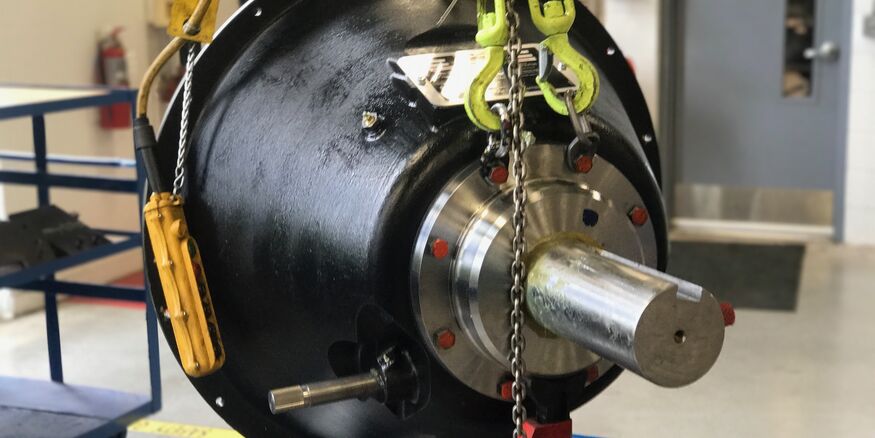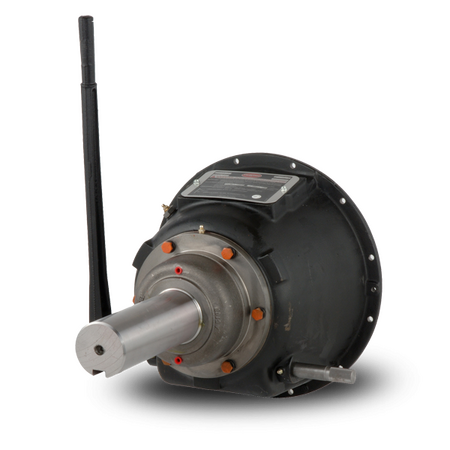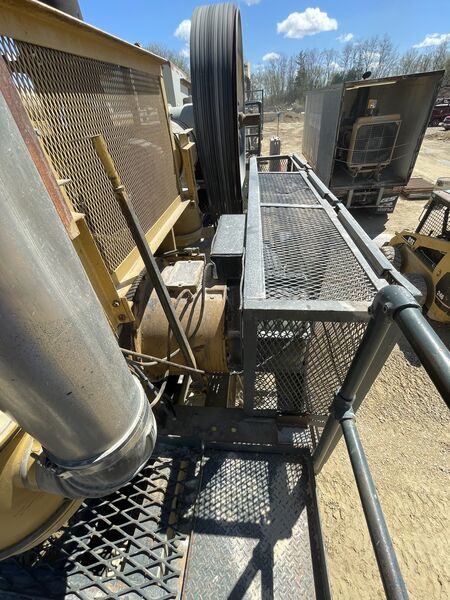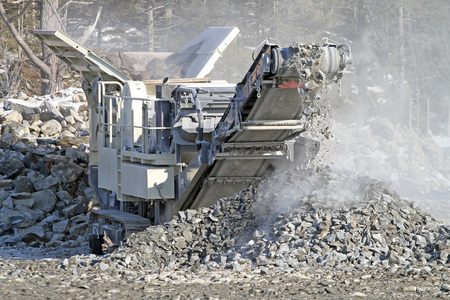What is a Power Take-Off (PTO)?

At a Glance
- A Power Take-Off (PTO) is a mechanical device that allows engines to transfer power to auxiliary equipment with the ability to engage and disengage, preventing damage during equipment jams and enabling cold engine starts without load.
- PTOs serve as connection points for speed reduction systems and act as sacrificial components that protect expensive engines from damage during mechanical failures.
- PTOs are standardized mechanical components used across multiple industries including agriculture, construction, mining, and marine operations where controlled power transfer from an engine to secondary equipment is required.
A Power Take-Off (PTO) is a mechanical device that transfers power from an engine to auxiliary equipment. It serves as an essential component in industrial and off-highway applications where controlled power transfer and the ability to disconnect from the power source are required.
Background
The concept of power take-offs originated in the early 20th century, with significant industrial development occurring in the 1920s. Initially designed for agricultural equipment to power implements from tractors, PTOs evolved to serve broader industrial applications as mechanization expanded across sectors.
Basic Functionality

The fundamental operation of a PTO is straightforward but essential:
- When engaged, the PTO transfers power from the engine to the auxiliary equipment
- When disengaged, the PTO allows the engine to run independently without powering the auxiliary equipment
In typical installations, PTOs connect to industrial diesel engines and provide an output shaft for connecting to various types of auxiliary machinery. This simple but critical function enables operators to control when power is transmitted to secondary systems.
PTO vs Clutch
A Power Take-Off (PTO) is often referred to as an over-center clutch because of the mechanical linkage it uses to engage and disengage power — specifically, a toggle mechanism that moves past a central pivot point, or "center."
When the operator moves the engagement lever, the linkage applies force to the clutch plates. As the linkage passes the "center" position, the system snaps into a locked position — either fully engaged or fully disengaged. This over-center action ensures the clutch stays securely in place without requiring continuous pressure from the operator.
The term "over-center clutch" highlights this key design feature, which is common in mechanical PTO systems.
The Necessity of a Disconnect Mechanism
One might question why a disconnect mechanism is necessary when direct drive to the engine is an option. The disconnect functionality provides two critical benefits:
- Protection from Sudden Stoppages: In applications like rock crushers, where equipment can become clogged with material, the PTO allows the auxiliary equipment to be disconnected from the engine, preventing damage.
- Cold Starting: Diesel engines, particularly in colder regions, benefit significantly from starting without a full load. The PTO enables operators to start the engine and allow it to reach proper operating temperature before engaging the auxiliary equipment.
Beyond Basic Functionality
While the primary function of power take-offs is to provide a disconnect mechanism, they offer additional benefits in machinery design and operation:

Speed Reduction Capabilities
PTOs provide a convenient point for integrating speed reduction systems between the engine and auxiliary equipment. Applications like dredge pumping systems, slurry pumps, and rock crushers often require the driven load to operate at speeds lower than the typical 1800-2100 RPM of industrial engines. PTOs accommodate these requirements through the implementation of sheaves and belts, enabling speed reduction to meet specific operational needs, even down to 100 RPM or less in some applications.

Protection for Expensive Components
Another significant advantage of power take-offs is their role as relatively inexpensive wear items. When unexpected stoppages or failures occur in machines with engines valued at $100,000 or more, the PTO serves as a protective barrier, preventing wear and damage to the costly engine components.
Industry Standards
Modern PTOs are manufactured to comply with internationally recognized standards, including:
- SAE (Society of Automotive Engineers) industrial diesel engine flywheel specifications
- SAE industrial diesel engine flywheel housing specifications
- Industry-specific torque and horsepower ratings
These standards ensure compatibility across different manufacturers and applications, allowing engineers and mechanics to select appropriate components regardless of the specific machinery involved.
Understanding PTO Systems in Depth
Power take-offs represent critical components in industrial machinery, offering disconnect capabilities, speed reduction options, and protection for expensive engine components. With applications across numerous industries including agriculture, construction, mining, and marine operations, PTOs continue to play an essential role in efficient and reliable power transmission systems.
For a comprehensive understanding of these vital mechanical systems, you may want to explore:
- PTO Applications - Discover how PTOs are utilized across various industries from rock crushing to irrigation systems
- Power Take-Off Components - Learn about the essential parts that make up modern PTOs including friction systems and bearing configurations
- How Does a Power Take-Off Work? - Understand the operational principles of different PTO types and their engagement mechanisms
- Types of Power Take-Off (PTO) - Compare different PTO designs including standard friction, rubber block drive, straddle bearing, and remote over center models
Whether you're designing new equipment, selecting the appropriate PTO for an application, or maintaining existing systems, understanding these fundamental aspects can help you make informed decisions and optimize performance.
PTOs
Power take-offs enable power source disconnection in industrial and off-highway equipment for essential operations.
- What is a Power Take-Off (PTO)?
- Power Take Off Applications & Industries
- Power Take-Off Components
- How Does a Power Take-Off Work?
- Types of Power Take-Off (PTO)